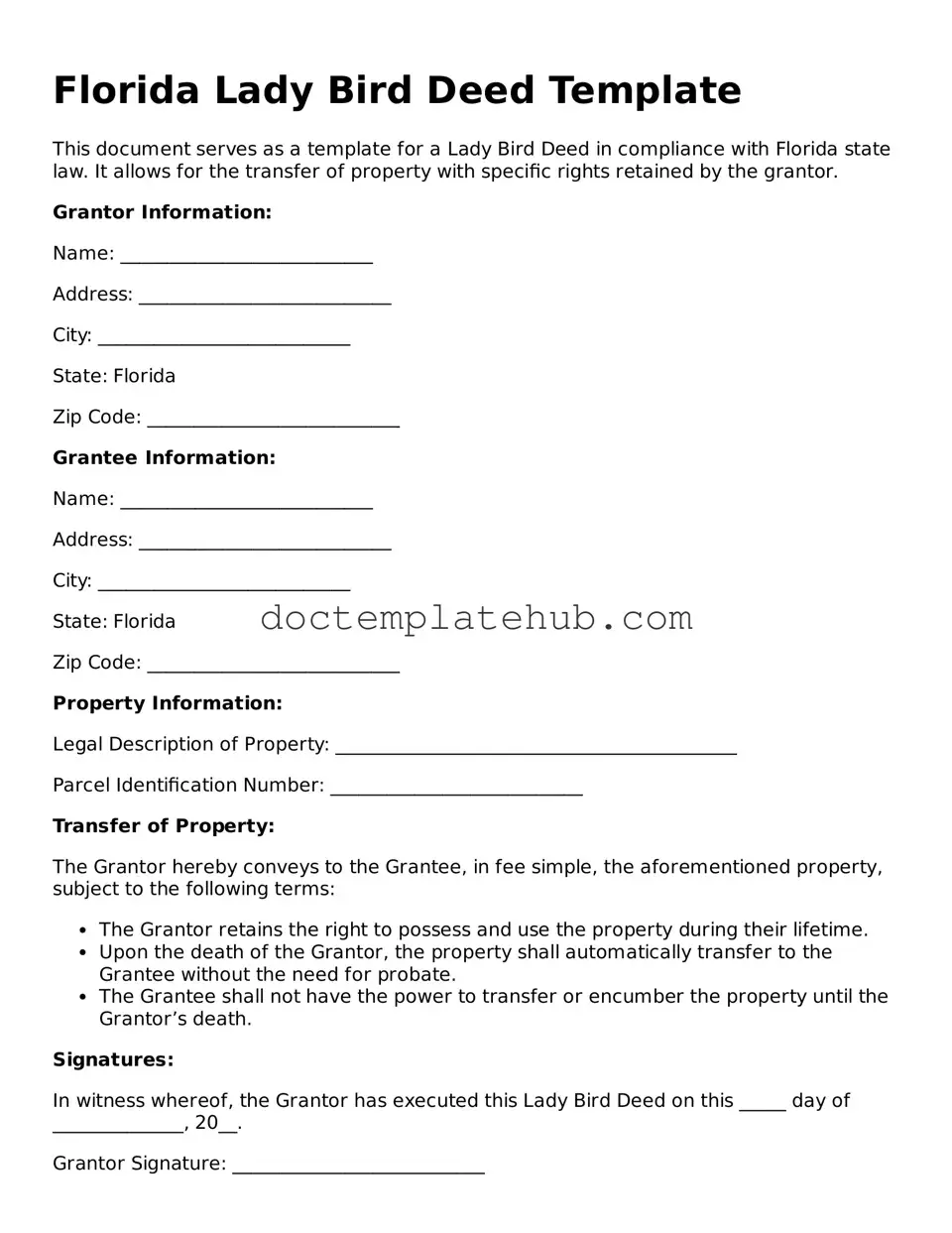What is a Lady Bird Deed in Florida?
A Lady Bird Deed, also known as an enhanced life estate deed, is a unique type of property deed used in Florida. It allows a property owner to transfer their property to beneficiaries while retaining the right to live on and control the property during their lifetime. This means the owner can sell, mortgage, or change the beneficiaries without needing their consent. Upon the owner's death, the property automatically transfers to the named beneficiaries, avoiding probate, which can simplify the process for heirs.
What are the benefits of using a Lady Bird Deed?
One of the primary benefits of a Lady Bird Deed is that it helps avoid probate, a legal process that can be time-consuming and costly. By using this deed, the property transfers directly to the beneficiaries upon the owner's death, which can save time and money. Additionally, the property owner retains full control and can make changes to the deed at any time. This flexibility allows for adjustments based on changing circumstances or relationships. Furthermore, since the property does not go through probate, it remains private, keeping the details of the estate out of the public record.
Who should consider using a Lady Bird Deed?
Individuals who wish to ensure a smooth transfer of their property to their heirs while retaining control during their lifetime may find a Lady Bird Deed beneficial. It is particularly useful for seniors looking to protect their home from Medicaid claims or for those who want to avoid the complications of probate. However, it’s essential for anyone considering this option to consult with a legal professional to understand the implications fully and ensure it aligns with their estate planning goals.
Are there any drawbacks to using a Lady Bird Deed?
While there are many advantages to a Lady Bird Deed, there are also potential drawbacks. One concern is that if the property owner needs to qualify for Medicaid, the property may still be considered an asset, which could affect eligibility. Additionally, if the owner decides to sell the property or takes out a mortgage, it may complicate the situation for the beneficiaries. Lastly, if the property owner has significant debts, creditors may still be able to make claims against the property after death, which could impact the beneficiaries. It is crucial to weigh these factors and seek professional advice before proceeding.
